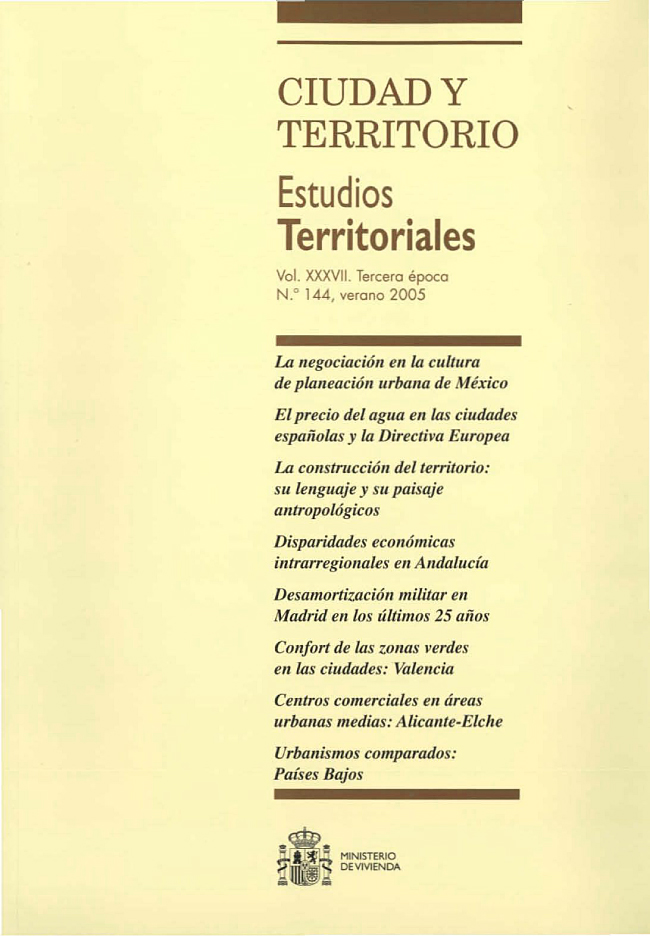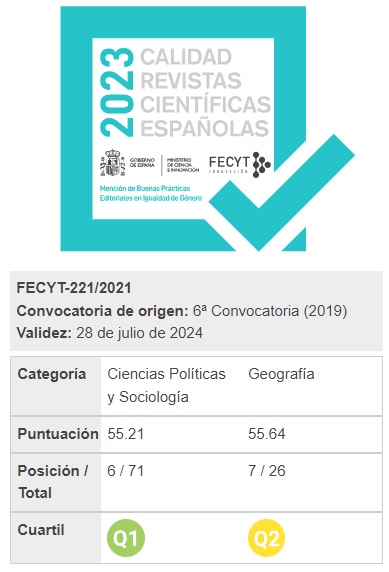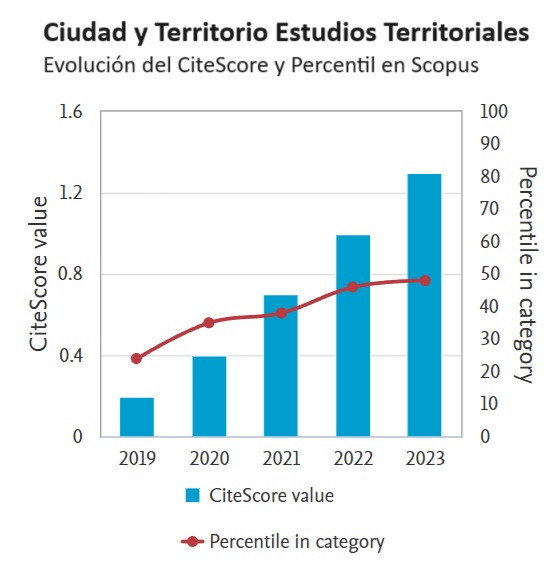The Language of Territorial Construction
Keywords:
Corografía, dinámica espacialAbstract
The author opens by stating that the modern world is marked by a conflict as between territorial identity and
the demands of globalization, a conflict that the Autonomous Region idea attempts to ameliorate, this though
it lacks precisely that capacity for overall administrative cohesion used by the Liberal Model for a State when
rejecting any validity for spatial differencing. He next speaks of territory as being the outcome of historical
stratification. The basic tools for determining spatial being ness, being grounded in repetition. Reticular cells
and the network by which they are defined are here felt to be the underpinning of spatial organization, the
networking being of two sorts, either that of lines of communication (vias) or limits i.e. bounds, boundries,
frontiers both of which exist to answer to the basic human necessities of communication and mutual
understanding. For the author there is thus much in common as between territorial structuring in its origins
and common speech. In the same wise, any historical territorial structuring must call into consideration the
demands that have been made by time itself as a determining factor in any comprehension of the same. The
outcome as fact is thus the result of an on-going process of change. Thus the walled-thus-bounded medieval
city came into being as a something different to the homogeneous territorial rural fact while the present-day
city is re-intergrating itself within the extended territory by means of its unlimited metropolitan spread. The
author thus here holds that the idea of territory as at present understood academically and administratively
runs contrary to the dynamic complexity of the reality it strives to encompass.
Downloads
Downloads
Published
How to Cite
Issue
Section
License
Copyright (c) 2005 José Ramón Mendoza de Luarca Navia Osorio

This work is licensed under a Creative Commons Attribution-NonCommercial-NoDerivatives 4.0 International License.
Considering the provisions of the current legislation on Intellectual Property, and in accordance with them, all authors publishing in CyTET give -in a non-exclusive way and without time limit- to the Ministry of Transport, Mobility and Urban Agenda the rights to disseminate, reproduce, communicate and distribute in any current or future format, on paper or electronic, the original or derived version of their work under a Creative Commons Attribution-NonCommercial-NoDerivative 4.0 license International (CC BY-NC-ND 4.0), as well as to include or assign to third parties the inclusion of its content in national and international indexes, repositories and databases, with reference and recognition in any case of its authorship.
In addition, when sending the work, the author(s) declares that it is an original work in which the sources that have been used are recognized, committing to respect the scientific evidence, to no longer modify the original data and to verify or refute its hypothesis. Author(s) also declare that the essential content of the work has not been previously published nor will it be published in any other publication while it is under evaluation by CyTET; and that it has not been simultaneously sent to another journal.
Authors must sign a Transfer of Rights Form, which will be sent to them from the CyTET Secretariat once the article is accepted for publication.
With the aim of promoting the dissemination of knowledge, CyTET joins the Open Journal Access (OA) movement and delivers all of its content to various national and international indexes, repositories and databases under this protocol; therefore, the submission of a work to be published in the journal presupposes the explicit acceptance by the author of this distribution method.
Authors are encouraged to reproduce and host their work published in CyTET in institutional repositories, web pages, etc. with the intention of contributing to the improvement of the transfer of knowledge and the citation of said works.







